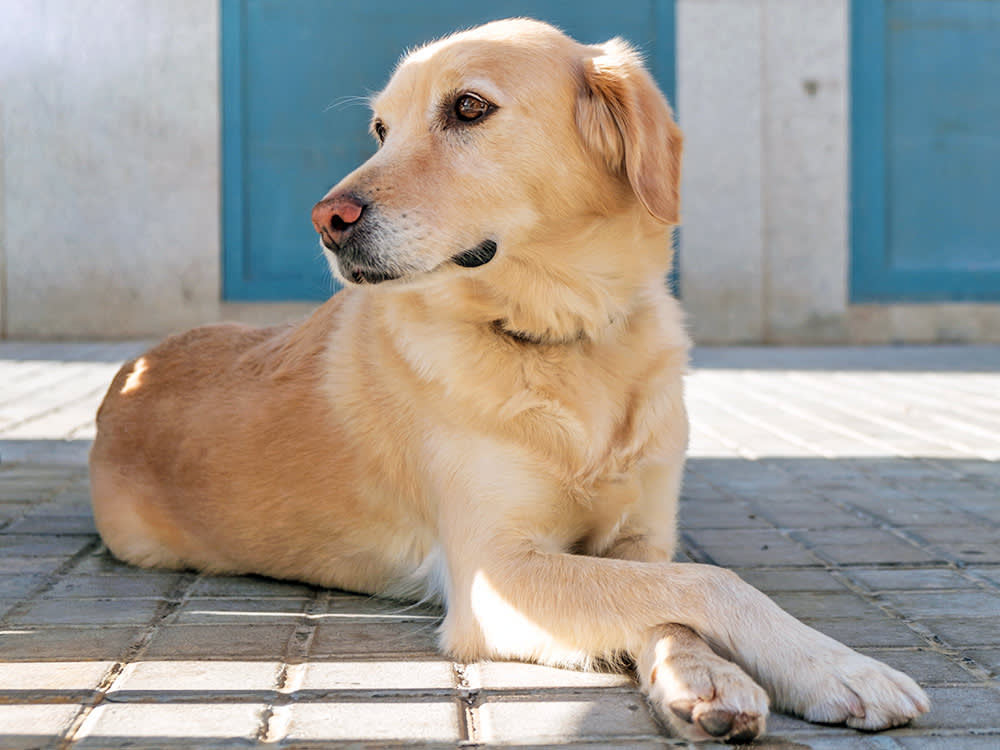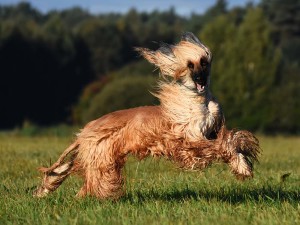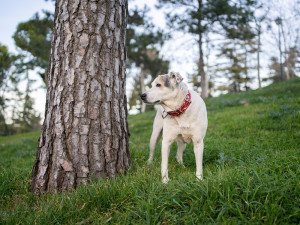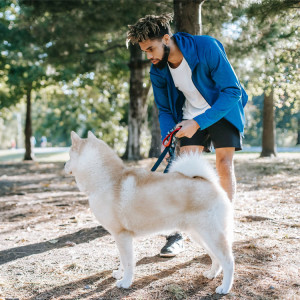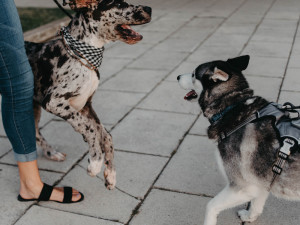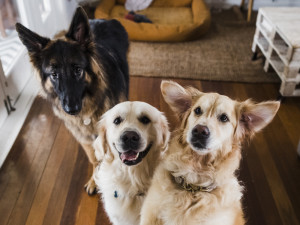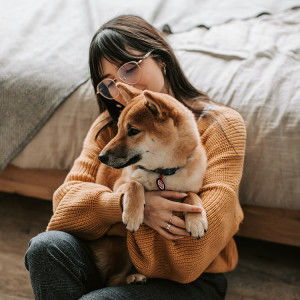What Your Dog is Trying to Tell You When They Cross Their Paws
It’s giving Lady Whistledown...
Have you ever found your dog lying with their paws neatly crossed, looking like they’re posing ready for a close-up? It’s an adorable position that can make your dog look even more cute than they already do (if that’s even possible). We’ve even given this move a nickname – the ‘polite paws’ – which for me, conjures up the cast of Bridgerton with gloved hands folded in their laps.
Paw crossing can be a subtle form of communication: a sign of relaxation, contemplation, or perhaps even one showing some discomfort. Read on to find out the reasons why dogs cross their paws and explore what it might tell you about your dog’s well-being.
Why do dogs cross their paws?
Most of the time when we see a dog crossing their paws it indicates that they are feeling comfortable. The pose shows that their body has flopped – fully relaxed – suggesting that they’re feeling safe and secure in the environment.
This sign of contentment is less likely to be shown by a dog who feels anxious or threatened. A dog that wasn’t completely comfortable would be more likely to hold tension in their body and have their limbs in a position from which they can move quickly. You might notice that your dog only adopts this position when they’re fully content, for example, after a nice walk and a tasty meal.
Lots of dogs also have paw preference. Just like we’re usually either left-or-right handed, dogs will have a more dominant side to their body. You may notice your dog always rests their left leg over their right when crossing their paws.
Studies have shown that dogs sometimes learn by imitating other dogs – and even sometimes their humans! In fact there’s a whole training movement known as ‘Do as I Doopens in new tab’, spearheaded by ethologist and dog trainer Claudia Fugazza whereby the human demonstrates the exercise and the dog is shown to copy it. So it may be that your dog is even imitating the limb crossing of either their canine or human family members.
What do crossed paws mean in dog body language?
Crossed paws usually indicate relaxed body language, especially if they’re showing other signs of contentment. They may have soft eyes, a relaxed spread-out body, dropping ears and a lack of tension around the mouth and brow.
It’s always important to look at the whole body of the dog when assessing how they’re feeling. If your dog is crossing their legs while also shifting their body weight away from you and turning their head to the side it may indicate that they want space and are trying to disengage.
Does paw crossing reflect a dog’s personality?
While this ‘polite paws’ pose may appear random, it could be telling you more about your dog than you first thought. Relaxed dogs are more likely to assume this position – suggesting they have a calm and confident personality. Anxious dogs would be less likely to be seen in this pose compared to being curled up in a tight ball or stiff in a straight ‘down’ position.
Breed also plays a role. As a behaviourist working with dogs – and even more so as a Mum to Basset Hounds – I’ve seen many short-legged dogs unable to learn the tricks of crossing their paws or putting their chin down onto their paws as it’s just not possible! Short-legged dog woes! It can also be a challenge for wider-bodied dogs, such as Bulldogs who may find it difficult to get their legs across to each other.
You may see breeds known to be a bit more ‘chilled’ and able to switch off, such as Golden Retrievers or Greyhounds – both of whom have lovely long legs to work with, I might add! – adopt the crossed paws pose. They may also find the way crossing their paws skews their ‘elbows’ out to the side as a more comfortable position for a nice long snooze. Of course, while paw-crossing can be influenced by breed – every dog is an individual! We’ve always got to account for genetics, environment as well as personality. If your pup is a rescue and you don’t know a whole lot about their background, you can always test their DNA using kits like Wisdom Panelopens in new tab to find out a little bit more about their genetics (and see if their behaviours match up!).
Is there any health significance to paw crossing?
For many dogs, paw crossing is just a normal posture to adopt. It simply shows relaxation and their preferred resting position. However, if your dog suddenly starts to cross their paws frequently when they haven’t before, it could signal an underlying issue, especially if combined with them starting to frequently lick their front limbs. It’s worth speaking to your veterinarian to get your dog checked for things like joint pain, discomfort, or neurological conditions. Arthritis, injury or even conditions like nerve damage can lead to abnormal paw positioning. Your vet will be able to rule out any potential health problems and ensure early intervention if necessary.
How to encourage relaxed behaviour in dogs
We all want our dogs to feel content and relaxed. We want them to find it easy to switch off and get quality rest, alongside the fun we enjoy together. It’s great when your dog thrives in social situations but can also take time to themselves and feel comfortable when home alone.
We spend a lot of time working on teaching our dogs to ‘do’ things and this task-focussed approach can sometimes mean our dogs don’t learn the wonderful ability of ‘switching off’. Sleep is vital for our dogs – quality rest takes place over multiple snoozing periods, totalling to around 12-16 hours per day ideally.
If you’re finding your dog is unable to switch off, the first thing is to get them checked out by your vet. Then start to delve into your dog’s world with a holistic approach – unpicking what they eat, what activity or exercise they enjoy, how they feel outside in the world and when they’re at home, whether their environment is suitable for that important rest or if distractions need to be somehow masked. You can also work with an experienced and ethical dog professional to support your dog’s emotional wellbeing so that you can encourage your dog to switch off to the day-to-day distractions that life in a human home brings.
While the sight of your dog crossing their paws is undeniably cute – perhaps even Instagram-worthy – there might be more to this pose than you first thought. While it usually means the dog is feeling relaxed and content, there could be something else afoot. So next time you notice your pup adopting the ‘polite paws’ pose, take a moment to consider if anything else could be going on.
